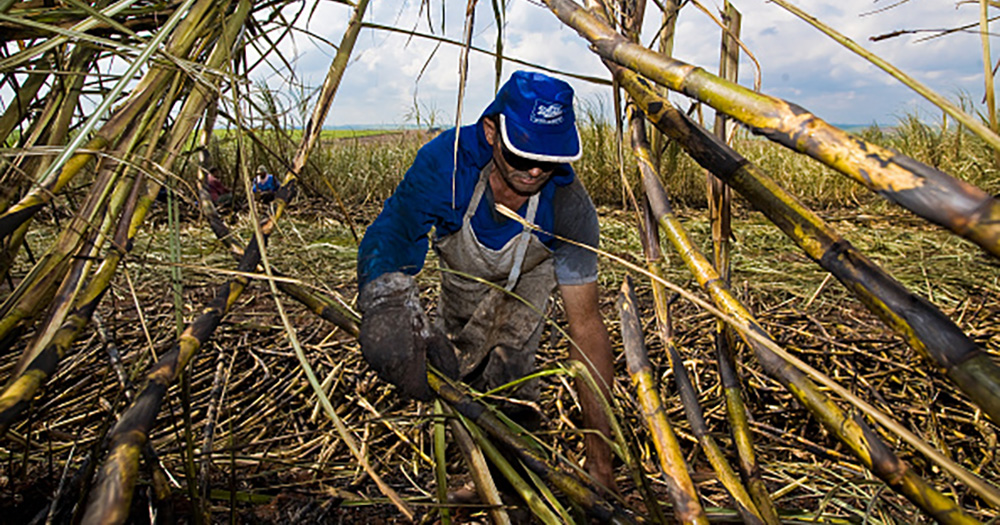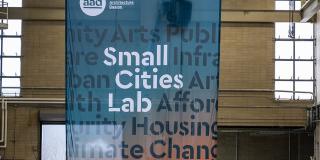Terry-Ann Jones examines the experiences of seasonal, migrant sugarcane workers in Brazil, providing insights in the country’s deep-seated inequalities
Thousands of workers from northeast Brazil make the journey to plantations in the more affluent southern part of the country each year to manually harvest the sugarcane that fuels Brazil’s lucrative ethanol industry. The trek is long, and the work is arduous and dangerous. Among the worst of the adversity these workers face, though, is the sense of degradation they feel at the hands of their own nation and, at times, by their fellow citizens. They are, for all intents and purposes, says Terry-Ann Jones, aliens in their own country.
Jones is a professor of political science and the deputy provost for undergraduate education . She has focused much of her research efforts over the last 15 years on understanding the complex social and economic situation that the sugarcane harvesters face and has detailed these findings in her most recent book, Sugarcane Labor Migration in Brazil.
Brazil is the fifth-largest country by area in the world, larger than the 48 contiguous U.S. states. It has more than 213 million inhabitants and had the 12th-largest Gross Domestic Product last year, but Brazil is rife with economic inequality. Despite its aggregate economic heft, Brazil’s GDP per capita is around one-tenth of that of the United States, ranking just behind Mauritius, according to the International Monetary Fund. Oxfam International, while noting some recent progress, has called the economic inequality in Brazil extreme and rates it as one of the most unequal nations in the world.
Jones first traveled to Brazil as a faculty member developing a student exchange program. She recalls waiting at John F. Kennedy International Airport to board her plane that day at the same time France was eliminating Brazil in the quarter-final of the 2006 World Cup.
“That was a pretty sad flight,” she recalls.
While in Brazil, Jones had a conversation with a sugarcane harvester that sparked her interest in the plight of these workers, and she was determined to learn more.
“On that first visit, I discovered that these workers have long, long days in the fields, they are constantly monitored to meet quotas, and sometimes workers literally drop dead on the job,” Jones says.
The Associated Press reported at that time 18 harvesters had died of exhaustion in Sao Paolo state between 2004 and 2007.
The harvesters wield machetes all day, hacking down the tough stalks of sugarcane. Protective gear is often improvised, and injuries are frequent. In addition, workers generally must live far from the plantations where they work and, after arriving there, can face another long drive to reach the actual worksite. Some harvesters rise as early as 3 a.m. to prepare their food for the day and get to work on time. Living arrangements are cramped and communal usually, with men piled into dormitories and families living in crowded tenements.
Beyond the complexity underlying the conditions and motivations of the workers, Jones unearthed a disturbing anomaly in her interviews with the seasonal workers, a phenomenon called internal migration. She describes this as “social and political exclusion among the economically marginalized.” For the traveling workers, this manifests as the feeling of being a foreigner at home.

Outsider parallels
In researching what the migrant workers were up against, Jones looked at the movements of populations from one region to another within large, pluralistic nations. Like many big countries, Brazil has significant differences from region to region, she says. The traveling workers from the northeast, however, endured far more alienation than citizens within other nations of comparable size and diversity.
“My research participants felt like they had gone to another country, so I thought those parallels warranted the same type of study that I would do with international migration,” she explains.
In interviews with Jones, workers from the northeast reported being treated with derision by locals in the south and being followed in stores by clerks who treated them as thieves.
“Migrants who enter other countries are not the priorities of those countries, but these Brazilians were at home in their own country,” says Jones, “and felt their fellow Brazilians had no regard for their lives and that the government was not protecting them.”
Despite the hardship, workers continue to make the trip from the northeast to the sugarcane plantations because the employment, though seasonal, pays better than what they would be able to earn closer to home.
“The majority of my research participants have an equivalent of an eighth-grade education, so they are limited in terms of employment opportunities,” Jones explains.
In addition, many workers are willing to make the journey because it allows them to support family members back home. There is also social prestige among peers, in that they can appear to others in their community that they are doing well.
“Typically, the migrant workers come home in November from cutting sugarcane, and they have money to buy Christmas presents and such. It seems like they are living well,” Jones says. “Others want to do the same, and that’s how you end up with these networks of workers willing to do the job.”
Northeast Brazil has historical parallels to the American South, Jones explains: “In the United States, following colonization and during the time when they were importing enslaved humans from Africa, this occurred mainly in the plantation economy of the South, while in Brazil, it was the northeast region. At that time, the northeast was the main area of sugarcane cultivation and was where you had the concentration of enslaved Africans.”
Over time, says Jones, as the broader economy developed, the needs of the northeast were disregarded in a manner similar to the way imperialist nations disregarded their colonies. The result is what Jones calls internal colonialism.
“The Brazilian north has in some ways been treated as a colony, and there is still enormous poverty,” Jones explains.
The effect is that the population is treated as a foreign resource to be exploited, rather than as fellow citizens with equal rights.
One of the reasons for the persistence of the difficulties sugarcane and other workers face is Brazil’s unaddressed history of racism, says Jones.
“I’m currently teaching a course that compares race and politics in Brazil, South Africa and the United States,” she says. “Brazil endured much of the same sort of history of the slave trade and slave labor, but the difference with Brazil—as opposed to the U.S. and South Africa—is that there hasn’t been an acknowledgement of racism.”
Brazilian sociologist Gilberto Freyre coined the term racial democracy in the early 1930s to refer to the notion that, because of the diversity and mixture of races in Brazil, the country had sidestepped the racism that plagued other nations.
“That is a central problem,” says Jones. “If racism doesn’t exist, you can’t address it.”
A pervasive contempt
While racism plays a part in the overall dynamic that oppresses the migrant workers, Jones says much of the vitriol faced by the migrant workers she spoke with was cultural.
“What shocked them was that they faced discrimination based on the types of food that they ate or the clothes that they wore because they’re from a different region,” she says.
Whether and how the treatment and conditions the sugarcane workers endure are addressed may soon be moot. Mechanization of the sugarcane harvest is becoming more prevalent in Brazil, and these workers could soon be seeking other kinds of employment.
“It’s not an occupation that people aspire to. These people do it out of necessity,” Jones says. “If we look at other kinds of dangerous labor historically, some occupations have been phased out, and people find other things to do.”
With the Oct. 30 victory of former leftist president Luiz Inácio Lula da Silva over conservative Jair Bolsonaro in the election to lead Brazil, chances are better that workers’ situations generally will improve, but the political environment is unsettled.
“I am not anticipating a 180-degree change in the lives of impoverished Brazilians, such as those who harvest sugarcane. Lula was president between 2003 and 2010, yet as you saw from the research that I initiated in 2007, poverty and inequality were such that people were willing to work as seasonal migrant sugarcane harvesters under dire conditions,” Jones says. “That said, I am optimistic about Lula’s victory because he seems to understand and support Brazil’s most marginal communities. There is ample evidence to suggest that Lula and the Workers’ Party in general are more interested in improving the lives of the poor than Bolsonaro.”
-- Chris Quirk
-- Images by Getty Images/Christa Neu







